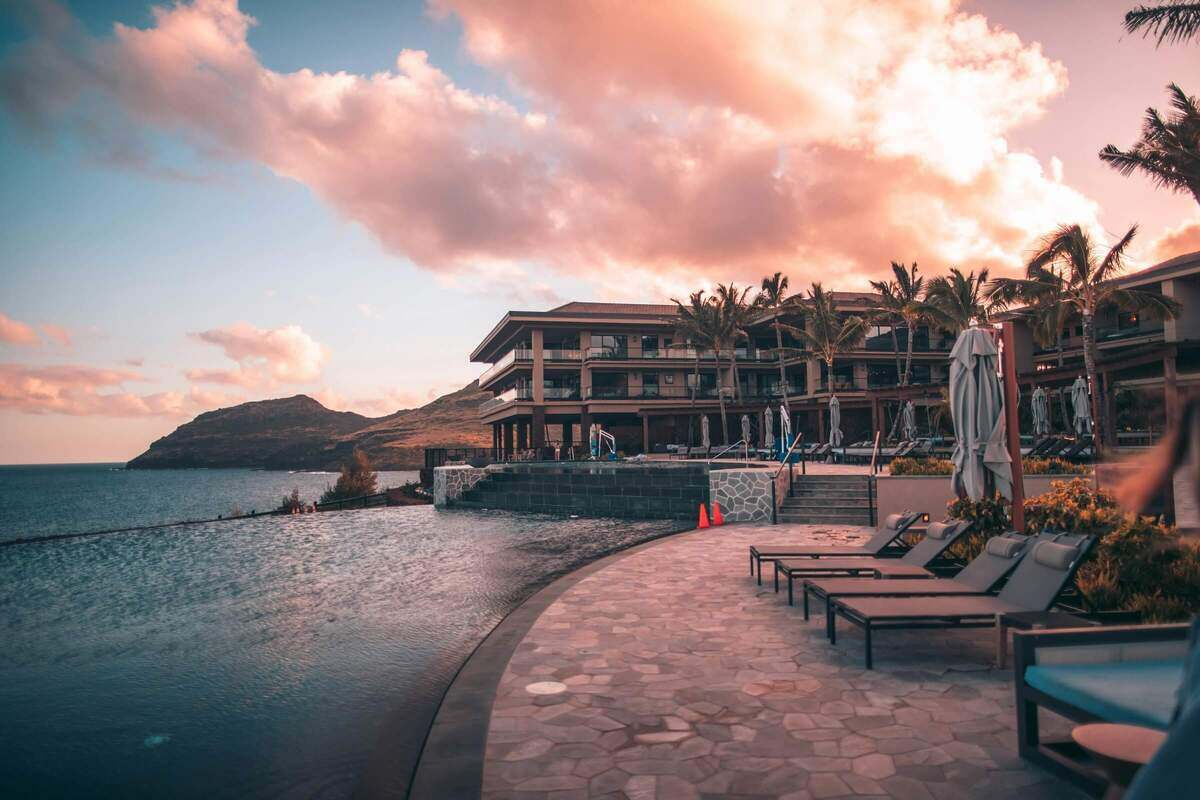Emerging Tech Shaping the Travel and Hospitality Industry in 2025
As we navigate through 2025, the travel and hospitality industry is undergoing a technological renaissance. Innovations in travel and hospitality...
4 min read
The Travel Foundry Mar 31, 2025 1:50:55 PM

In an era defined by digital fatigue, economic pressures, and an increasingly chaotic news cycle, travelers in 2025 are seeking more than just a change of scenery-they want to be transported. Escapism is no longer a fringe trend; it's a powerful emotional driver reshaping how people choose where to go, what to spend on, and which brands they trust. For hospitality marketers, this signals a shift from traditional advertising to immersive storytelling that taps into guests' desire to dream, disconnect, and feel something extraordinary.
Marketing escapism is not about ignoring reality. It's about creating space for imagination and possibility. And in a crowded marketplace, the brands that deliver on this emotional promise are capturing attention, loyalty, and long-term growth.

Escapism is rooted in a psychological need to disengage from stress and reconnect with joy, novelty, and inspiration. Whether through fantasy, nostalgia, or sensory immersion, people gravitate toward experiences that offer emotional uplift. In travel, this manifests in bookings that prioritize mood over miles, and stories over square footage.
According to Medallia (2025), 61% of hotel guests are willing to spend more with brands that offer a customized experience. And three out of five U.S. travelers believe a trip is wasted if they don’t experience the local culture (Skift, 2024). These statistics signal a deeper truth: travelers aren't just seeking places to go. They're looking for identities to try on, emotions to feel, and narratives to become part of.
Key Marketing Opportunity: Hospitality brands should audit their messaging for emotional resonance. Instead of promoting "rooms with a view," position the stay as an invitation into a new mindset or dream world. Emphasize transformation, not transaction.
Many of the most effective hospitality campaigns in recent years have succeeded by positioning properties not as destinations, but as dreamscapes.
Each of these examples delivers more than comfort. They deliver wonder, agency, and an emotional arc.
This narrative-driven approach echoes the themes explored in our article on Seamless Storytelling, where we dive into how consistency and emotional relevance across touchpoints can shape perception and loyalty.
Key Marketing Opportunity: Build narratives that turn amenities into emotional assets. A guided hike becomes a hero's journey. A spa treatment becomes a rite of renewal. Create language that frames your offering as part of a larger story the guest gets to live.

Escapism isn't confined to fantasy visuals or lush adjectives. It can be built into the bones of your brand, from the way you design a booking flow to the music playing in your lobby. The most powerful escapist experiences use multisensory storytelling, thoughtful design, and emerging tech like AR and AI to heighten immersion.
Imagine a guest stepping through your doors and being greeted by a subtle scent that evokes a coastal breeze or the sound of soft jazz echoing through an art deco lounge. Every detail adds depth to the narrative you're building. The digital experience should be just as vivid. This can include AR previews of rooftop views or AI-powered recommendations that anticipate unspoken desires.
Research published in the International Journal of Hospitality Management found that AR/VR applications significantly increase guest satisfaction and intention to return (Lim, Jasim, & Das, 2024). When guests can preview a property in immersive 3D or receive real-time itinerary suggestions through AI tools, they feel not only informed, but enchanted.
Key Marketing Opportunity: Integrate technology that enhances escapism, not distracts from it. Use augmented reality to preview experiences, not just rooms. Use AI to suggest a fairytale hike or a surprise romantic dinner, not just room service.

Constant content creation is now essential for restaurants and hotels trying to compete for attention. But that doesn't mean producing more. It means producing better. Escapist content thrives on platforms like Instagram and TikTok, where visual storytelling meets aspirational curiosity.
The most successful hospitality brands aren't just showing their properties; they're showing how it feels to be there. They're casting the guest as the protagonist in a story that unfolds with every swipe.
Imagine a carousel post that begins with a dimly lit lounge glowing with amber tones, then swipes to a handwritten note left on the pillow, and finally to a twilight rooftop moment. Each image is a frame in a story, and each caption a whispered invitation to dream.
This philosophy aligns with insights from our Millennials and Gen Z Loyalty article, which explores how younger travelers crave connection and meaning through the content they consume and the brands they trust.
Key Marketing Opportunity: Build a content library that reflects different escapist archetypes—the wellness seeker, the romantic, the adventurer, the quiet introvert. Show, don't sell. And use social media as your brand's dream journal.
Escapism can feel like a big, abstract concept. But you don't need an enchanted forest or a six-figure campaign budget to start using it. Begin by:
Think of your property not just as a place to stay, but as a portal to something more. It's a story waiting to be lived. That story might begin with a welcome drink inspired by local folklore or a surprise turndown gift that sparks curiosity and wonder.
Most importantly, stay human. Escapism isn't about perfection; it's about resonance.
Key Marketing Opportunity: Ask yourself: what story does our brand help guests tell about themselves? Then shape every message, offer, and visual asset to support that story. If you're unsure how to begin designing a more emotionally resonant guest experience, start by reviewing our recent article on Guest Experience Strategies.
It offers practical insights on connecting brand values to every guest touchpoint, which can serve as a foundation for more immersive storytelling.
In 2025, escapism isn’t frivolous. It’s fundamental. As travelers seek meaning, emotion, and relief from reality, hospitality brands have an opportunity to become more than service providers. They can become storytellers, curators of magic, and trusted guides into the beautiful unknown.
Looking ahead, escapism will only become more nuanced. It will be shaped by advances in technology, a renewed focus on sustainability, and a desire for authentic local narratives. The opportunity is ripe for brands to not only meet this demand but to lead with intention.
By embracing escapism as a strategic lens, marketers can differentiate their brands, deepen guest loyalty, and create experiences that don’t just get booked. They get remembered.
Want help turning your property into a story guests can’t wait to live? Drop us a line or email us at hello@thetravelfoundry.com.


As we navigate through 2025, the travel and hospitality industry is undergoing a technological renaissance. Innovations in travel and hospitality...

As we step into 2025, the travel and hospitality industry is experiencing transformative shifts. Understanding these hospitality marketing trends is...

Thinking Outside the Room As the travel and hospitality industry pivots towards an increasingly competitive and technology-driven landscape,...